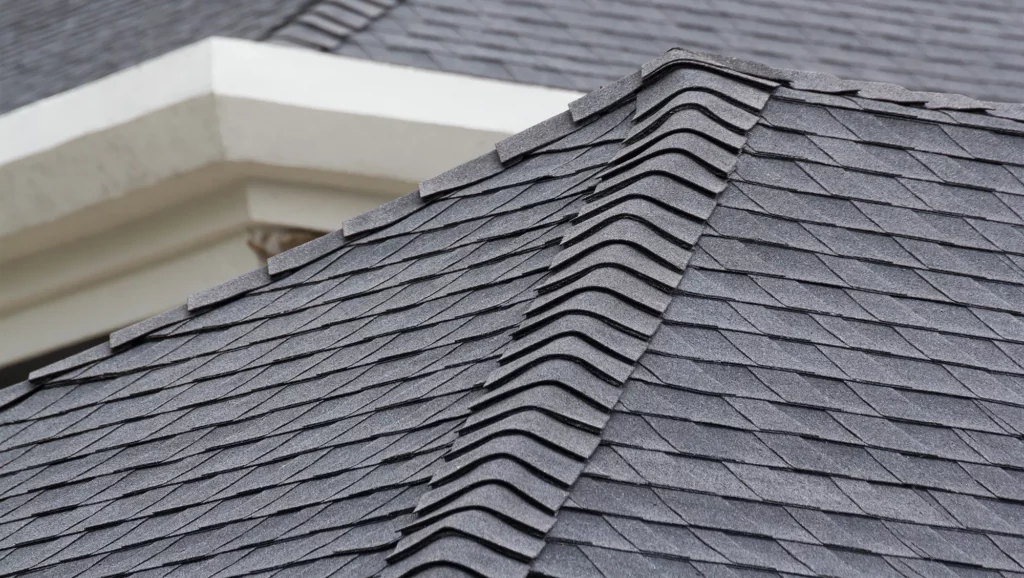Your home’s roof plays a vital role in protecting your family and belongings from the elements, and when it comes to roofing materials, asphalt shingles are a popular choice. However, over time, even the most durable asphalt shingles will wear down, necessitating a roof replacement. If you’re considering an asphalt shingle roof replacement, this blog will provide you with everything you need to know to make informed decisions.
1. Signs It’s Time for a Replacement:
Before we delve into the replacement process, let’s identify some common signs that indicate your asphalt shingle roof may need replacing:
- Age: Asphalt shingle roofs typically last around 20–25 years. If your roof is approaching or has exceeded this lifespan, it’s time to consider a replacement.
- Visible Damage: Cracked, curled, or missing shingles are clear indicators of roof deterioration.
- Leaks: Water stains on your ceiling, peeling paint, or dripping water indicate roof leaks that need prompt attention.
- Moss or Algae Growth: Excessive moss or algae growth can damage shingles and compromise your roof’s integrity.
- Granule Loss: Shingles losing their granules can signal aging and vulnerability to damage.
- Sagging or Unevenness: A visibly sagging or uneven roof line is a sign of structural problems that may require replacement.
2. Choose the Right Shingles:
Selecting the right shingles is a critical step in your roof replacement project. Asphalt shingles come in various types, including three-tab shingles and architectural shingles. Architectural shingles, also known as dimensional or laminated shingles, offer greater durability and a more appealing aesthetic. Consider your budget, climate, and desired appearance when choosing shingles.
3. Hire a Professional Roofer:
While some may be tempted to tackle a roof replacement as a DIY project, it’s a complex and dangerous undertaking best left to experienced professionals. Roofers have the expertise, tools, and safety measures required to ensure a successful and safe roof replacement.
4. Roof Inspection:
Before starting the replacement process, your chosen roofing contractor will conduct a thorough inspection of your existing roof. This inspection will help identify any underlying issues that need addressing, such as damaged decking or insulation.
5. Tear Off vs. Overlay:
In most cases, it’s advisable to tear off the old shingles rather than overlaying new ones on top of the existing roof. Tear-off allows for a more thorough inspection, better ventilation, and ensures that any underlying problems are addressed.
6. Deck Repair and Preparation:
If your roof inspection reveals damaged decking or structural issues, it’s essential to address them before installing new shingles. A solid foundation is crucial for the longevity and performance of your new roof.
7. Installation Process:
The actual installation of asphalt shingles involves several steps:
- Underlayment: A water-resistant underlayment is installed over the decking to provide an additional layer of protection against moisture.
- Starter Shingles: Starter shingles are installed at the eaves and rake edges to prevent wind uplift and protect against ice dams.
- Shingle Installation: The shingles are installed in an overlapping fashion, starting from the bottom and working their way up. Nails are placed in designated areas on each shingle.
- Flashing: Flashing is installed around roof penetrations, such as chimneys and vents, to prevent leaks.
8. Ventilation and Insulation:
Proper attic ventilation and insulation are critical components of a well-functioning roof. Ensuring that your attic has adequate ventilation will help regulate temperature and reduce moisture, prolonging the life of your shingles.
9. Clean-up and Inspection:
After the shingles are installed, the roofing crew will clean up the debris and conduct a final inspection to ensure the job is done correctly..
10. Cost Considerations:
The cost of asphalt shingle roof replacement can vary significantly depending on factors like the size of your roof, the type of shingles chosen, and any necessary repairs. It’s advisable to obtain multiple quotes from reputable roofing contractors to ensure a competitive price.
11. Permits and Regulations:
Before embarking on a roof replacement project, check with your local building department to determine if permits are required and if there are any specific regulations you need to follow.
In Conclusion:
Replacing your asphalt shingle roof is a significant investment in the long-term protection and value of your home. By recognizing the signs that it’s time for a replacement, choosing the right shingles, hiring a professional roofer, and following the necessary steps for a successful installation, you can enjoy a durable and reliable roof for years to come. Remember that proper maintenance and regular inspections are key to maximizing the lifespan of your new asphalt shingle roof.
Roofer Temecula https://www.roofertemecula.com/

